Best Bash Scripting Tools to Buy in December 2025

Learning the bash Shell: Unix Shell Programming (In a Nutshell (O'Reilly))
- QUALITY ASSURANCE: EACH BOOK IS THOROUGHLY INSPECTED FOR QUALITY.
- AFFORDABLE PRICES: SAVE MONEY WITH OUR COMPETITIVELY PRICED USED BOOKS.
- ECO-FRIENDLY CHOICE: PROMOTE SUSTAINABILITY BY BUYING PRE-OWNED BOOKS.


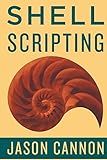
Shell Scripting: How to Automate Command Line Tasks Using Bash Scripting and Shell Programming


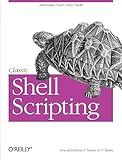
Classic Shell Scripting


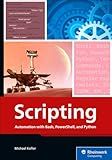
Scripting: Automation with Bash, PowerShell, and Python—Automate Everyday IT Tasks from Backups to Web Scraping in Just a Few Lines of Code (Rheinwerk Computing)



BASH Guide


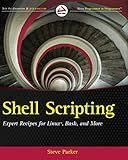
Shell Scripting: Expert Recipes for Linux, Bash, and more


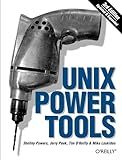
Unix Power Tools, Third Edition


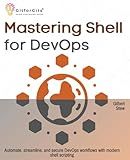
Mastering Shell for DevOps: Automate, streamline, and secure DevOps workflows with modern shell scripting



Command Line Fundamentals: Learn to use the Unix command-line tools and Bash shell scripting


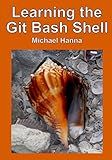
Learning the Git Bash Shell: Become a Windows Command Line Commando


To get a Bitbucket Auth token via a bash script, you can utilize the Bitbucket REST API for authentication. Here is a step-by-step guide on how to achieve this:
- Start by creating a personal access token on Bitbucket. Log in to your Bitbucket account, go to your profile settings, and navigate to "App passwords" or "Access tokens" section. Generate a new token specifically for your bash script.
- In your bash script, use the cURL command to make a POST request to Bitbucket's authentication endpoint. Pass your Bitbucket username and personal access token as parameters in the request body. For example:
#!/bin/bash
USERNAME="<your_bitbucket_username>" TOKEN="<your_personal_access_token>"
response=$(curl -s -k -H "Content-Type: application/x-www-form-urlencoded" -X POST -u "$USERNAME:$TOKEN" "https://bitbucket.org/site/oauth2/access_token" -d "grant_type=client_credentials")
Process the response to extract the token
- The response variable will contain a JSON object with the authentication token. Use a JSON parser like jq to extract the token from the response. If jq is not installed, you can install it using package managers like apt or brew.
# Assuming jq is installed token=$(echo "$response" | jq -r '.access_token') echo "Bitbucket Auth Token: $token"
- The token variable will hold the Bitbucket Auth token obtained from the response JSON. You can use this token for further API requests, such as cloning repositories, pushing changes, or performing any other authorized actions.
Remember to keep your Bitbucket Auth token secure and avoid sharing it publicly.
What are the advantages of using a bash script to obtain a Bitbucket Auth token?
There are several advantages of using a bash script to obtain a Bitbucket Auth token:
- Automation: A bash script allows you to automate the process of obtaining a Bitbucket Auth token. You can schedule the script to run at specific intervals or trigger it as part of a larger workflow. This saves time and effort compared to manually generating a token each time.
- Security: Bash scripts can be encrypted and stored securely. Storing your Bitbucket Auth token in an encrypted script adds an extra layer of security. It reduces the risk of exposing sensitive information, compared to storing the token in clear text or manually inputting it each time.
- Easy implementation: Bash scripts are easy to write, modify, and execute. You can quickly create a script to fetch a Bitbucket Auth token using Bitbucket API endpoints or command-line tools like cURL. You can also include error handling and logging mechanism in the script to enhance its functionality.
- Customization: Using a bash script gives you the flexibility to customize the token retrieval process. You can incorporate additional logic or checks within the script to validate the token or perform any required pre or post-processing tasks.
- Integration: Bash scripts can be easily integrated into existing workflows or used with other tools, such as build systems, deployment pipelines, or continuous integration and delivery platforms. This integration helps streamline development and deployment processes and ensures consistent access to the Bitbucket API.
- Portability: Bash scripts can be executed on various operating systems, including Linux, macOS, and Windows (using tools like Cygwin or Git Bash). This portability makes it easier to use the same script across different environments, improving the consistency and reliability of token retrieval.
How to generate a Bitbucket Auth token using a bash script?
To generate a Bitbucket auth token using a bash script, you can use the Bitbucket REST API. Here's an example script that utilizes the curl command to interact with the API:
#!/bin/bash
Set your Bitbucket credentials
USERNAME="your_username" PASSWORD="your_password"
Set your Bitbucket API endpoint
API_ENDPOINT="https://api.bitbucket.org/2.0"
Generate the auth token
RESPONSE=$(curl -s -X POST -u $USERNAME:$PASSWORD -H "Content-Type: application/x-www-form-urlencoded" -d "grant_type=password&username=$USERNAME&password=$PASSWORD" $API_ENDPOINT/oauth2/access_token/) AUTH_TOKEN=$(echo $RESPONSE | awk -F"[,:}]" '{print $2}')
Print the auth token
echo "Auth Token: $AUTH_TOKEN"
Make sure to replace "your_username" and "your_password" with your actual Bitbucket credentials.
Save the script in a file (e.g., generate_token.sh), and then execute the script using the following command:
bash generate_token.sh
The script will send a POST request to the Bitbucket API with your credentials and retrieve the auth token from the response. The auth token will be printed in the console.
How to handle rate limits when retrieving a Bitbucket Auth token via a bash script?
When retrieving a Bitbucket Auth token via a bash script, you may encounter rate limits set by the API. To handle these rate limits, you can implement various strategies:
- Sleep and Retry: If you receive a rate limit response from the API, sleep for a certain period of time (typically specified in the response headers), and then retry the request. Here's an example of how you can implement it in bash:
#!/bin/bash
function to retrieve the token
function get_token() {
retrieve the token
token=$(curl -s -X POST -u "username:password" "https://api.bitbucket.org/2.0/token")
check if the response contains rate limit error
if echo "$token" | grep -q "Rate limit exceeded"; then # extract the retry-after value from the response headers retry_after=$(echo "$token" | grep -i "retry-after:" | tr -d '\r')
# extract the delay from the retry-after header (in seconds)
delay=$(date -d "$retry\_after" +%s)
# sleep for the delay period
sleep $delay
# retry the request
get\_token
fi
process the token or handle any other response
...
}
call the function
get_token
- Exponential Backoff: If you want a more robust approach, you can implement an exponential backoff strategy. In this approach, you exponentially increase the delay between retries. For example, you can start with a delay of 1 second and double it with each retry. Here's an example of how to implement exponential backoff in bash using a retry counter:
#!/bin/bash
maximum number of retries
max_retries=5
current retry count
retry_count=0
delay in seconds before the next retry
delay=1
function to retrieve the token
function get_token() {
increment the retry count
((retry_count++))
retrieve the token
token=$(curl -s -X POST -u "username:password" "https://api.bitbucket.org/2.0/token")
check if the response contains rate limit error
if echo "$token" | grep -q "Rate limit exceeded"; then # check if maximum number of retries reached if [ $retry_count -gt $max_retries ]; then echo "Maximum number of retries reached. Exiting." exit 1 fi
# output the error message
echo "Rate limit exceeded. Retrying in $delay seconds."
# sleep for the delay period
sleep $delay
# double the delay for the next retry
delay=$((delay \* 2))
# retry the request
get\_token
fi
process the token or handle any other response
...
}
call the function
get_token
Note that in these examples, you may need to adjust the specific API endpoint, authentication method, and response processing logic to fit your use case.
What is the role of a Bitbucket username when generating an Auth token using a bash script?
When generating an Auth token using a bash script in Bitbucket, the Bitbucket username is used to authenticate the user and grant the appropriate permissions to the token. The Auth token allows the script to access and perform certain actions on the user's behalf, such as creating repositories, pushing code, or managing pull requests.
The Bitbucket username is typically provided as part of the authentication process when generating an Auth token. The token is generated based on the user's credentials, including their username and password or other authentication method, such as an OAuth token.
What is the use of an Auth token in Bitbucket?
In Bitbucket, an Auth token (also known as an access token) is used to authenticate API requests. It serves as an alternative to using a username and password for authentication.
By using an auth token, you can securely authenticate requests to the Bitbucket API without exposing your actual login credentials. This is particularly useful when programmatically accessing or integrating with Bitbucket, as it provides a more secure and manageable way to authenticate API calls.
Here are a few use cases for an auth token in Bitbucket:
- Scripting and automation: If you're writing scripts or automating certain tasks that involve the Bitbucket API, you can use an auth token to authenticate these requests.
- Integrations: When integrating Bitbucket with other tools or services, such as CI/CD pipelines or deployment systems, you can use an auth token to authenticate API requests from these integrations.
- API testing and development: If you're building custom applications or testing APIs, an auth token can be used to authenticate and access data from Bitbucket.
Overall, an auth token provides a secure and efficient way to authenticate API calls to Bitbucket, and it is especially useful in scenarios where you don't want to expose or store sensitive login credentials.
